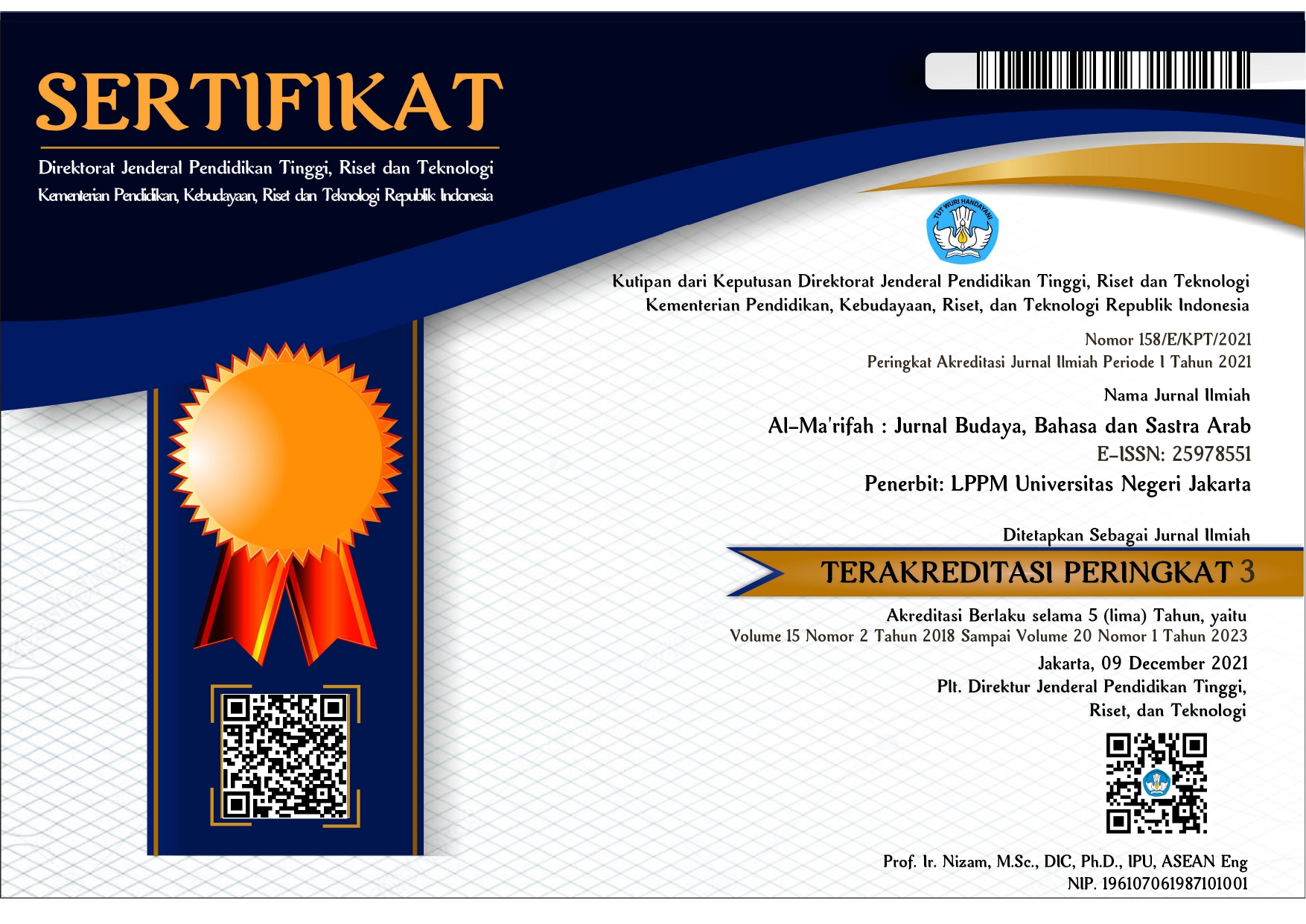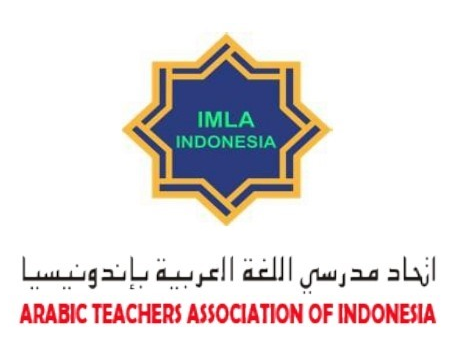Alfu Laylah wa-Laylah bayn al-Ḥaḍārah al-‘Arabīyah wa-al-Ūrūbīyah
Abstract
Many Muslims today are ignorant of their history and glory in the past. They are unaware of their ancestors, who were role models and leaders of the world culturally and scientifically. On the other hand, the tale of “One Thousand and One Nights” achieved tremendous popularity worldwide. Hence, the writers wanted to highlight the value and the influential role he played in human societies. In addition, Night is pure spring water with its freshwater, the European novel tree. In some instances, many books were produced by French and German authors. The nature of this study necessitated taking advantage of the descriptive method, which defies facts, in addition to studying the phenomenon as a result of influencing the construction of the literary work, what the writer did for this tributary that he drew from others, and how he employed it in his literary output. Arab and European literature is influenced by each other, as it appears in the imaginary drawings of Europeans inspired by the story of the Thousand and One Nights. In contrast, the Arabs were influenced intellectually, taking into account their cultural and civilizational specificity.
References
Abū Sulaymān, A-Ḥ. A. (1991). Azmat al-‘aql al-Muslim. Malaysia: Dār al-Nashr.
‘Abd al-Qādir, Sh. b. M. (1996). al-Ightirāb fī ḥikāyāt Alfu Laylah wa-Laylah: Muqārabah nafsīyah ijtimā‘īyah. (Tesis., Jāmi‘at Talmasān, Algeria). Retrieved from https://www.theses-algerie.com/4969077360377641/memoire-de-magister/universite-abou-bekr-belkaid---tlemcen/الإغتراب-في-حكايات-ألف-ليلة-وليلة
al-‘Aqqād, ‘A. M. (2005). Athar al-‘Arab fī al-ḥaḍārah al-Uwrūbīyah. Giza: Nahḍat Miṣr li-al-Ṭibā‘ah wa-al-Nashr.
al-‘Azāwī, “A-R. Ḥ. (2017). Tārīkh al-ḥaḍārah al-‘Arabīyah al-Islāmīyah. Ammān: Dār al-Khalīj.
Bassnett, S. (1999). al-Adab al-muqāran: Muqaddimah naqdīyah (A. Ḥ. Nuwayrah, Trans.). Beirut: al-Majlis al-A‘lá li-al-Thaqāfah.
Faydūḥ, Y. (2009). Ishkāliyāt al-tarjamah fī al-adab al-muqāran. Damascus: Ṣafaḥāt li-al-Dirāsāt wa-al-Nashr.
Gharīb, M. (1998). Ajmal qiṣaṣ Alfu Laylah wa-Lailah. Cairo: Markaz al-Kitāb li-al-Nashr.
Hāshim, Z. (1970). Faḍl al-ḥaḍārah al-Islāmīyah wa-al-‘Arabīyah ‘alá al-‘ālam. Cairo: Dār Nahḍah.
Ḥasan, Ḥ. Ḥ. (1992). Ḥaḍārat al-‘Arab fī ṣadr al-Islām. Beirut:al-Mu’assasah al-Jāmi‘īyah li-al-Dirāsāt wala-Nashr wa-al-Tawzī‘.
Ibn Khaldūn. (2005). al-Muqaddimah. Cassablanca: al-Dār al-Bayḍā’.
Ibn Salāmah, R. (2009). al-Ḥaḍārah al-‘Arabīyah al-Islamiyah bayna al-ta’aththur wa-al-ta’thīr. Algeria: Dīwān al-Maṭbū‘āt al-Jāmi‘īyah al-Jazā’ir.
al-Imām, M. F. (2008). Ma‘ābir al-ḥaḍārah al-‘Arabīyah ilá Uwrūbā. Ammān: Dār al-Ma’mūn.
Ma‘rūf, N. (1975). Aṣālat al-ḥaḍārah al-‘Arabīyah. Beirut: Dār al-Thaqāfah.
al-Najjār, Kh. F. (2015). Tārīkh al-ḥaḍārah al-‘Arabīyah al-Islamīyah. Amman: Dār Ṣafā’.
Ouyang, W-C. (2016). Male friendship and brotherhood in Arabic and Chines cultures. Alif: Journal of Comparative Poetics, (36), 231+ Retrieved from https://link.gale.com/apps/doc/A478140524/AONE?u=anon~73bb2d03&sid=googleScholar&xid=03d03372
Qijāl, N. (2009). al-Waẓā’if al-asāsīyah li-al-rasm al-istishrāqī qubayl wa ibbān al-isti‘mar al-gharbī li-al- ‘ālam al-Islāmī. Insaniyāt, (46), 127–142. doi:10.4000/insaniyat.924
Al-Qalamāwī, S. (n-d.). Alfu laylah wa-laylah. Cairo: Dār al-Ma‘ārif.
Alfu laylah wa-laylah, Juz. 3 (2013).
Shākir, M. (2011). Mawsū‘ah al-ḥaḍārāt al-qadīmah wa-al-ḥadīthah wa-tārīkh al-umam. Amman: Dār Usāmah li-al-Nashr.
Sigrid, H. (1993). Shams al-‘Arab tasṭa‘u ‘alá al-gharb. (F. Bayḍūn & K. Dasūqī, Trans.). Beirut: Dār al-Jīl & Dār al-Āfāq al-Jadīdah.
Ṭawīl, T. (1985). Fī turāthinā: al-‘Arabī al-Islāmī. Kuwait: ‘Ālam al-Ma‘rifah.
Voltaire. (1960). al-Qadar. (Ṭ. Ḥusayn, Trans.). Beirut: Dār al-‘Ilm li-al-Malāyīn.
Zaytūnī, L. (2002). Mu‘jam muṣṭalaḥāt naqd al-riwāyah: ‘Arabī – Inklīzī – Faransī. Beirut: Makatabat Lubnān Nāshirūn & Dār al-Nahār li-al-Nashr.
al-Zayyāt, A. Ḥ (n.d.). Tārīkh al-adāb al-‘Arabī. Cairo: Dar Nahḍah Miṣr li-al-Ṭibā‘ah wa-al-Nashr.
Copyright (c) 2022 Hilda Dimyati Asmara, Ahmad Habibi Syahid

This work is licensed under a Creative Commons Attribution 4.0 International License.











